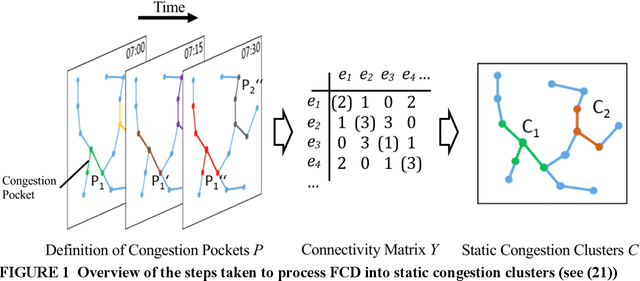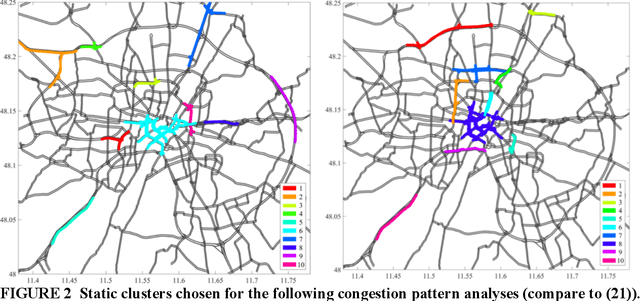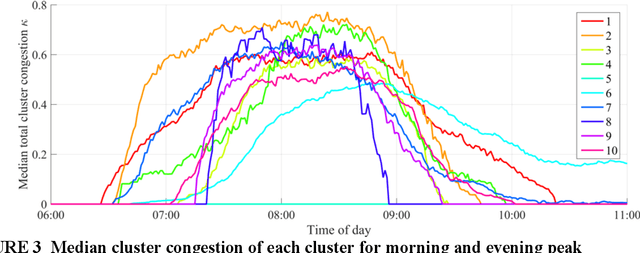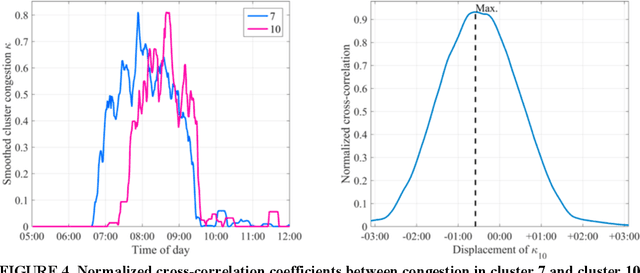Feature Engineering for Data-driven Traffic State Forecast in Urban Road Networks
Paper and Code
Sep 17, 2020



Most traffic state forecast algorithms when applied to urban road networks consider only the links in close proximity to the target location. However, for longer-term forecasts also the traffic state of more distant links or regions of the network are expected to provide valuable information for a data-driven algorithm. This paper studies these expectations of using a network clustering algorithm and one year of Floating Car (FCD) collected by a large fleet of vehicles. First, a clustering algorithm is applied to the data in order to extract congestion-prone regions in the Munich city network. The level of congestion inside these clusters is analyzed with the help of statistical tools. Clear spatio-temporal congestion patterns and correlations between the clustered regions are identified. These correlations are integrated into a K- Nearest Neighbors (KNN) travel time prediction algorithm. In a comparison with other approaches, this method achieves the best results. The statistical results and the performance of the KNN predictor indicate that the consideration of the network-wide traffic is a valuable feature for predictors and a promising way to develop more accurate algorithms in the future.
 Add to Chrome
Add to Chrome Add to Firefox
Add to Firefox Add to Edge
Add to Edge